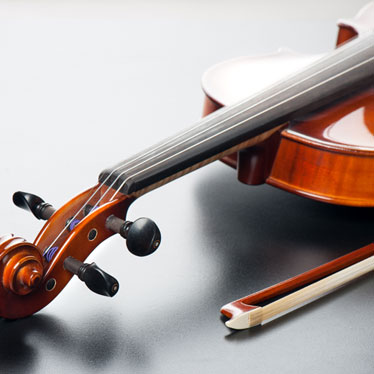When Is It Time To Upgrade Your Violin

A violin is like a good old friend. The time may come, through nobody’s fault, when you just grow apart. Because of your history together, it can be hard to know when it’s time to say goodbye. Well, you have a lot of history with your violin too. You hang out with your violin all the time, at least during your daily practice (You are practicing daily, right?!), making it a constant companion. But after time, the tipping point comes when your current violin isn’t quite right for you anymore.
If you don’t recognize that tipping point, you’re probably holding back your progress with your lessons and development. So keep an eye out for these most common tipping points that tell you when you’re ready to upgrade your violin.
You’ve literally outgrown it – literally
The size of your violin has to keep pace with you as you grow. This isn’t an issue for grown adults, but the younger the student, the more often the violin needs to get upgraded. If you can’t hold your instrument properly, you can’t practice proper technique. You’ll also tire out and increase soreness in your muscles. The tension of holding the wrong-sized violin can make practicing a painful chore, and thus one you’ll skip.
If you can’t get comfortable holding your violin, it may be the wrong size. You can test this out a couple of ways: Hold the violin under your chin and put out your left arm. If your wrist extends past the scroll, then it’s time to size up. Another way to check violin size is to hold the violin normally and hold the scroll from underneath the violin. If your elbow angle is 90 degrees or below, it’s time to size up.
Your skills have outpaced your instrument
Student violins can’t produce the sound quality that more advanced or professional violins can. It’s all in the construction. Typically, student violins are made with a less expensive hardwood than professional violins. Their construction process is a bit different as well. The violin won’t be aged as long and the pieces will likely be machine cut. These are perfectly acceptable construction processes for student violinists who are still working on basics, but it can inhibit the beauty of the violin’s sound for the serious violinist.
At a certain point, your skill and seriousness level reach a stage where you must have a violin that matches them. It’s hard to stay inspired by the music and your development when the sounds you’re hearing don’t move you. On a practical level, some lower quality materials, like a fiberglass bow, just make certain complicated movements impossible, such as sautille or spiccato, which hinders your technique development.
Investing in a higher quality violin also improves your technique, capabilities and repertoire. Producing a more significant sound can inspire you to practice longer and help keep you motivated to tackle more difficult pieces.
This doesn’t mean you need to find a $45 million instrument. There are less expensive options.
A big change is coming
If you’re planning a major musical milestone, auditioning for a conservatory, or want to start recording your performances and practices to create a demo, you’ll need an instrument to match the heights of your musical aspirations.
Once you’ve made the mental commitment to start down the path of becoming a professional musician, make the upgrade to a violin that will present you and give you the best advantage. Check out our tips for buying a violin and upgrading. Take time to hold and test different advanced or professional models so you can find the fit and feel of the one that feels like you were born to hold it.
Understanding when it’s time to upgrade to a new violin is key to continuing to develop as a musician.


